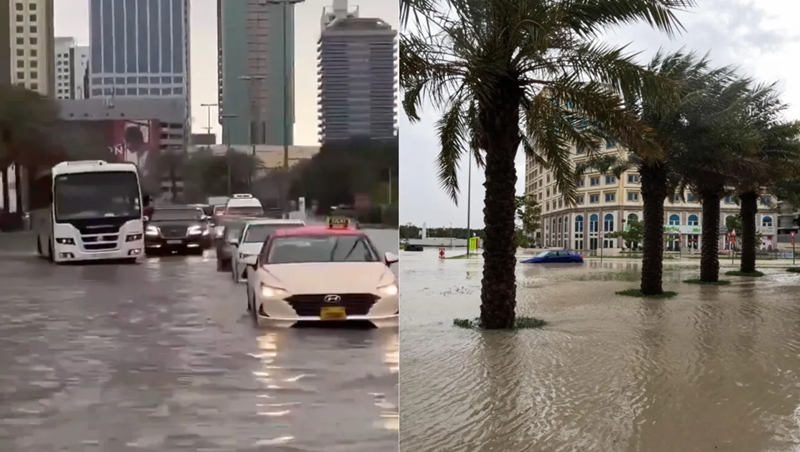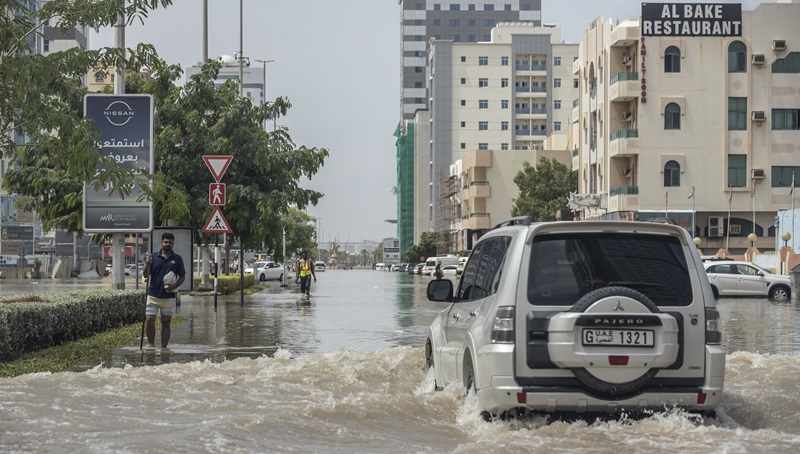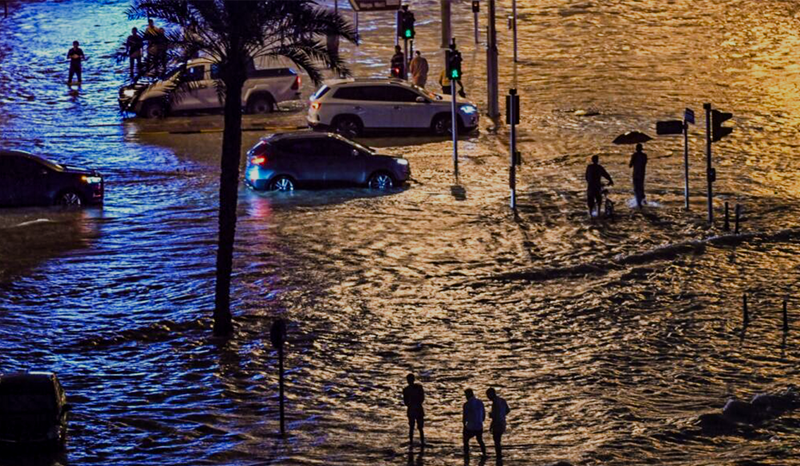The United Arab Emirates recently experienced its most intense rainfall in 75 years, causing widespread flooding and disruption across the country. The heavy downpours led to road closures, flight cancellations, and power outages, as the infrastructure struggled to cope with the deluge. The unexpected weather event caught many residents off guard, as the UAE is known for its arid climate and limited rainfall. However, climate scientists have warned that extreme weather events like this may become more frequent due to climate change.
The government has been working to improve its disaster preparedness and response capabilities in light of this new reality. Despite the challenges posed by the heavy rainfall, the UAE has shown resilience and solidarity in the face of adversity, with communities coming together to support each other and assist those in need. As the country continues to grapple with the aftermath of this historic weather event, it serves as a reminder of the importance of being prepared for the unexpected and working together to build a more resilient society.

Stunning Images Capture Historic Rainfall Across the UAE
The United Arab Emirates has recently experienced a historic amount of rainfall, resulting in stunning images across the country. From the bustling city of Dubai to the serene deserts of Abu Dhabi, the rainfall has transformed the landscape into a picturesque scene. The mesmerizing images capture the beauty of nature as the rainwater creates a contrast against the arid backdrop of the desert. The normally dry and dusty streets have been transformed into flowing rivers, creating a surreal and captivating sight for residents and visitors alike.
The images showcase the power and unpredictability of mother nature, as the UAE is typically known for its hot and dry climate. The rainfall has brought a sense of rejuvenation and life to the region, with the lush greenery and blooming flowers adding a touch of color to the usually monochromatic landscape. The stunning images serve as a reminder of the importance of appreciating and preserving the natural world, as well as the resilience and adaptability of the UAE in the face of extreme weather events. Overall, the historic rainfall has provided a unique opportunity to witness the beauty of the UAE in a new light, showcasing the country’s ability to adapt and thrive in the face of unexpected challenges.
The Impact of Record-Breaking Rainfall on UAE Infrastructure
The UAE recently experienced record-breaking rainfall, which had a significant impact on the country’s infrastructure. The heavy rainfall caused flooding in many areas, leading to road closures and traffic disruptions. The drainage systems in some areas were unable to cope with the volume of water, resulting in waterlogging and damage to roads and buildings. The excessive rainfall also put pressure on the country’s water supply infrastructure, with some reservoirs reaching capacity and leading to concerns about water scarcity.
In addition, the heavy rainfall highlighted the vulnerability of some buildings and structures in the UAE to extreme weather events, raising questions about the resilience of the country’s infrastructure to climate change. The impact of the record-breaking rainfall on UAE infrastructure serves as a stark reminder of the need for ongoing investment in infrastructure resilience and adaptation measures to ensure that the country can withstand future extreme weather events.
Additionally, it underscores the importance of effective urban planning and sustainable development practices to mitigate the impact of such events in the future. The UAE government must prioritize infrastructure improvements and climate change adaptation strategies to safeguard the country’s infrastructure and ensure the well-being of its residents in the face of increasingly unpredictable weather patterns.

Historical Comparison: UAE’s Rainfall Trends Over the Decades
The United Arab Emirates has experienced significant fluctuations in rainfall trends over the past few decades. In the 1970s and 1980s, the UAE received relatively higher amounts of rainfall compared to recent years. This was attributed to various factors such as global climate patterns and local weather systems. However, since the late 1990s, the UAE has seen a noticeable decrease in annual rainfall, leading to concerns about water scarcity and drought.
This shift in rainfall patterns has had a profound impact on the country’s agriculture, water resources, and overall ecosystem. The UAE government has implemented various measures to address these challenges, including the construction of desalination plants and the promotion of sustainable water management practices. Despite these efforts, the UAE continues to face ongoing challenges related to water scarcity and climate change.
As the country looks towards the future, it is crucial for policymakers and stakeholders to continue monitoring rainfall trends and implementing strategies to mitigate the impacts of changing weather patterns. By understanding the historical comparison of rainfall trends over the decades, the UAE can better prepare for the challenges that lie ahead and work towards building a more resilient and sustainable future.

Looking Ahead: How the UAE Plans to Address Extreme Weather Challenges
The United Arab Emirates (UAE) is no stranger to extreme weather challenges, with scorching temperatures, sandstorms, and occasional heavy rainfall posing significant risks to the region. In response to these threats, the UAE government has developed a comprehensive plan to address the impacts of climate change and extreme weather events. One key aspect of this plan is a focus on infrastructure improvements, such as building stronger and more resilient buildings, roads, and other critical infrastructure to withstand extreme weather conditions. Additionally, the UAE is investing in advanced technology and research to better predict and prepare for extreme weather events.
This includes the use of artificial intelligence and data analytics to improve forecasting accuracy and early warning systems. Furthermore, the UAE is implementing policies to promote sustainable practices and reduce carbon emissions, in an effort to mitigate the effects of climate change and prevent further extreme weather events.
By taking a proactive approach to addressing extreme weather challenges, the UAE is working towards creating a more resilient and sustainable future for its citizens and the environment. Through strategic planning, investment in technology, and a commitment to sustainability, the UAE is positioning itself to effectively mitigate the impacts of extreme weather events and ensure the safety and well-being of its population for generations to come.
